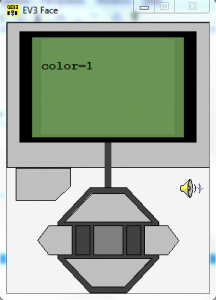

QEV3BotSim allows the user to configure the connection of up to four sensors chosen from the set of eight available sensors mounted on the robot.Ĭost: Starts at $49 for single seat, or $299 for 30 seats for 365 days.Ĭarnegie Mellon University’s Robot Virtual Worlds simulates robots in 3D environments using RobotC and enables students to program virtual or physical robots. QEV3Bot Simulator is a free Windows-based LEGO EV3 simulator. Provides good feedback about the robot’s sensor values.The simulator is relatively versatile, allowing the user to move the robot and obstacle around the map while the program is running.Open Roberta Lab enables students to write programs for a virtual EV3 robot using a block-based programming language.The same programs can be used on a physical EV3 robot running ev3dev. Program a real EV3 brick or a virtual one using the interactive simulator.Program in drag-and-drop block coding, JavaScript text programming, or switch between them.They can precisely control sensor input values and get immediate feedback about what’s happening with the motors and the display. MakeCode for EV3 is a browser-based programming environment that enables students to program a physical robot or a simulated EV3 brick.The simulator enables to students to test and debug their programs interactively. Use one of the many built-in robots or configure your own.the robot won’t run straight without the help of a gyro) Many built in challenges and missions, or upload your own image to use as a map.Runs in a browser, no login or accounts needed.
#Robotc mac code
Generated Python code can run on a physical EV3 robot running ev3dev or Pybricks. A variety of maps are available for testingįrom the creator of EV3DevSim, Gears is a newer and more capable simulator that supports Blockly and Python.The same programs can be used on a physical EV3 robot running ev3dev. For more information, visit: EV3DevSimĭevSim enables students to write Python programs for a virtual EV3 robot. *Note: Amazon Future Engineer offers free online virtual robotics & coding classes for any student or teacher affected by COVID-19 in the US, Canada, Argentina, Colombia and Chile. Offers an online coding tournament where classes compete virtually.Teachers can create classes and monitor student progress.
#Robotc mac series
#Robotc mac install


They range from open-ended tools that come with no agenda about how they are to be used through to highly-structured, curriculum-aligned activities.
#Robotc mac software
Features include: RobotC text programming Runs on Windows 7, 8/8.1, or 10 EV3 brick emulator.Īre you looking for a way to enable your students to program a LEGO robot without access to the hardware? Here’s a summary of some of the most popular and accessible EV3 emulators and virtual environments currently available, including both free and licensed software products. Carnegie Mellon University’s Robot Virtual Worlds simulates robots in 3D environments using RobotC and enables students to program virtual or physical robots. ROBOTC has been tested with VMWare Fusion, Parallels Desktop, and Apple's Boot Camp. ROBOTC for MINDSTORMS will run with a Virtualization client on a Apple Macintosh. ROBOTC for MINDSTORMS will not run natively in any other operating system other than Microsoft Windows.

Mac users can access the software through an emulator such as Parallels, as I did, and this worked well enough. Virtual Playfield mat with virtual QEV3Bot model. Knowledge of RobotC is required to go beyond the sample programs.
#Robotc mac license
ROBOTC 4.x for LEGO MINDSTORMS ROBOTC 4.x for VEX Robotics ROBOTC 3.x for Arduino Robot Virtual Worlds - LEGO 4.x Robot Virtual Worlds - VEX 4.x Purchase Building License - LEGO 4.x Purchase Building License - VEX 4.x Purchase Homework Pack Distributors Robomatter Store.


 0 kommentar(er)
0 kommentar(er)
